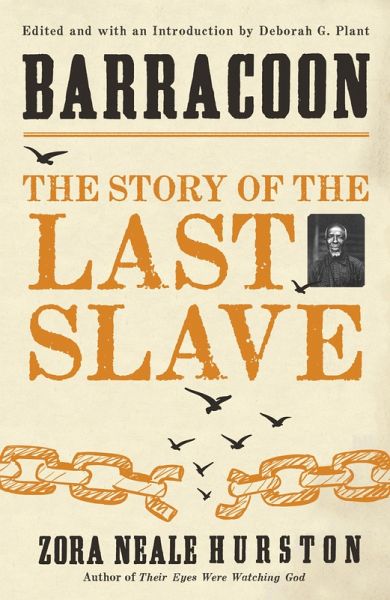Book: Barraccon - the (uncomfortable) story of the last slave

Zora Neale Hurston's 1930's interviews with the last known survivor of the trans-Atlantic slave trade - Oluale Kossola or as he was later called Cudjo Lewis - was finally published in 2018.
Cudjo has arrived in Alabama in 1860, a good half-century after Britain and the USA officially abolished the international trafficking of African people to the "New World". Yet an estimated 3,873,6000 Africans were nevertheless exchanged for gold, guns and other European and American merchandise from African "elites"/rulers, such as the King of Dahomey (the kingdom of Dahomey was located in modern-day Benin/Nigeria). While enslavement of people was not unusual among African tribes, the sell of prisoners was particularly importance to accumulate wealth as well as political dominance.
Hurston uses vernacular in her book, so as for Cudjo to tell his story directly and authentically - his capture, his sell and crossing, his five and a half year as a slave in Alabama, and his life as "free man" after Union soldiers freed the south in 1865.
Alice Walker most aptly writes in the 2018 Foreword:
"Reading Barracoon, one understands immediately the problem many black people, years ago, especially black intellectual and political leaders, had with it. It resolutely records the atrocities African [ruling elites] peoples inflicted on each other, long before shackled Africans [....] arrived on ships as "black cargo" [...]
Who would want to know, via a blow-by-blow account, how African chiefs deliberately set out to capture Africans from neighboring tribes [...]?
Excellent read. For people interested in African history and beyond. This is an important story for both sides of the Atlantic, but particularly for the African continent, on which the narrative of the strong(er) white man that has come and captured slaves without much effort has prevailed. A more truthful look at how African elites/leaders have strongly participated in this disgusting business, could realign self-perceptions, from a victim-driven role to a active participant. Chapter V in Barracoon is particulalry powerful in this regard and should be essential reading in all history classes. It can help open up the discussion on elites and inequality, and paint a more truthful picture of the past. Here the sections of the Chapter I find most important:
“De king of Dahomey, you know, he got very rich ketchin slaves. He keep
his army all de time making raids to grabee people to sell so de people of
Dahomey doan have no time to raise gardens an make food for deyselves.
Maybe de king of Dahomey never come make raid in Takkoi [the place where
Cudjo is from in West Africa], but one traitor from Takkoi go in de Dahomey. He
a very bad man and de king (of Takkoi) say, ‘Leave this country.’ Dat man want
big honors in de army so he go straight in de Dahomey and say to the king, ‘I
show you how to take Takkoi.’ He tellee dem de secret of de gates.
Derefore, you unnerstand me, dey come make war, but we doan know dey
come fight us. Dey march all night long and we in de bed sleep. We doan know
nothin’. (pp44-45)
What
follows is a detail description how the Takkoi village is brutally raided by
the Dahomey soldiers (including women soldiers) with French guns and big knifes
in their hand, killing people “so fast” they don’t even make it through the
gates into the bush. Many others are simply captured and then marched to
Dahomey with the king saying “Git in line
to go to Dahomey so de nations kin see I conquer you and sell Akia’on in de
barracoon.
And so he does. Cudjo
is marched through Dahomey to the coast where he is sold and shipped across the
waters on the last American slaver – the Clotilda. Gripping story with lots of
interesting, albeit sad details.

Comments